|
Score: 94/100 (9.4 out of 10)
“Twelve-Minute Risk Management” by Ivy Walker is one of the best business-related books we've ever read, even compared to some of the heavy-hitters in previous seasons like “Negotiate Like a CEO” and “The Team Game.” It can really stare eye-to-eye with quality books like that. What's incredible about this book is its focus on one key topic that often gets overlooked: RISK. There's a flurry of self-help and business books about affirmative thinking, being a go-getter, living your dreams, following your passions, but there aren't very many books for the more cautious and apprehensive among us who say, “HOLD UP. WAIT A MINUTE. SOMETHING AIN'T RIGHT.” There needs to be more books like this. Even in a country like the United States that's supposed to be friendly to business, there are so many things out to get your business from cybercriminals, criminal-criminals (like thieves and arsonists), inside jobs, and the government itself (through regulations). There are also issues that are easy to overlook like the relatively high risk of workplace violence including domestic violence spilling into the workplace. Honest to goodness, this book scared us, probably for the better. It may have made us a bit paranoid, especially when it comes to cybersecurity. Can you believe what would happen if someone actually managed to h*ck all the business and personal info on your computer? That's a nightmare! Imagine if you ran a relatively big business with over $100,000 going in and out, then someone managed to access your account and transfer it all! Or what if someone leaked all your customers' data, and then you owed them all in settlements! Wowie chihuahua! If makes us consider getting VPNs or something. Remember when North Korea did that to Sony? What a disaster! Another risk that likely gets overlooked by most businesses is the threat of a shooting in a workplace. These are surprisingly common. The author says that many businesses have fire or natural disaster drills, but almost none have active-shooter drills. So, what happens when a shooting actually happens? It's chaos and the response is poor. People needlessly die or get hurt, and the consequences reach far beyond that. Families get broken. Children are orphaned. Partners are widowed. There's bad press and a stigma that surrounds your business that scare customers away. You have to pay to address physical and psychological damages to employees. It's like a snowballing ripple effect with these things. And what's both incredible and extremely tragic is that many of these things could be prevented if someone had intervened or spoken up. If someone had just said that they suspected a co-worker was on edge, purchased weapons, or had made a threat, then many of these incidences may have been prevented. That's where employee education comes in, and that's a huge focus of this book. Employees should know that they can report things anonymously and that it's to be expected and encouraged. No one should feel forced to keep secrets in the workplace, especially ones that could have such dire consequences as life, death, or safety. Safety always comes first. The author says that no amount of money is greater than someone's life or safety. That means that if you have to hire out experts or specialists to do potentially dangerous things like lift heavy objects or fix a ceiling, then do so. The expense of getting it done right and safely is far less than if an untrained or non-specialized employee were to have something fall on them, break their back or ankle, or have the ceiling cave in on them. It's better to spend the extra money to make sure that safety and security measures are in place than to pay for it later in injuries, damages, loss of life, lawsuits, or workers comp. Another major focus of this book is the risk presented by inside jobs, especially ones that can wreck a small business. It only takes one employee with too much power and too many “keys” to steal/embezzle thousands of dollars from you, sometimes over an extended period of time and without you (the employer) knowing. This is why there need to be checks and balances. No one person should be signing all the checks without them being checked or approved by another party, including CFOs and treasurers. The book gives a rather interesting story about a lady who secretly embezzled money from the mayor's office/city and county year after year after year, even operating unscrupulously through multiple mayoral terms. The point is: it could happen to you and your business if you don't have the proper safeguards in place! All in all, this is very good business book that's totally worth your time going through. Check it out on Amazon!
2 Comments
Score: 90/100 (9.0 out of 10)
“Magellan the Magical” by Krystal M. Harris isn't your typical children's book. It is complex, deep, and heartfelt. This is an example of a book that is so much more than meets the naked eye. You initially think that this is going to be just some ole' story about a little boy and his cute husky dog, but it's actually a story about a boy with a complex set of issues and a rough upbringing coping with these problems in a therapeutic way. Our main protagonist, Kodi, is a very creative and bright child whose life is marred by bullying and an absence of true friends. For these reasons, he becomes increasingly reclusive. As fate would have it, he comes into possession of a plush wolf named Magellan. Magellan becomes his close companion for most of the story, helping to give Kodi the courage and inspiration to hope, dream, and eventually step out of his comfort zone. Magellan helps to form a base of safety in Maslow's hierarchy of needs or of trust in Erikson's theory of psychosocial development, allowing Magellan to venture out and try things he wouldn't otherwise try, even reaching out to the bullies he fears so much. This book is incredibly emotional. You really feel for Kodi and want the best for him. He's a really good kid living through a really rough patch. It's something that kids of all generations have gone through: bullying, browbeating, peer-pressure, and the like. Social media is only making those things worse as kids compare themselves to other kids who present an image of being “perfect” and having the “perfect” life and the “perfect” family. Of course, this is pretty much never genuine. The affects this has on the psyches of children and teenagers is incredible. We'll likely see all kinds of research come out by 2030 of adults whose lives were profoundly impacted by social media and cyberbullying in their younger years. This book does a good job at inspiring and encouraging readers to think positively, have hopes and dreams, and to never give up. This book has one of the most beautiful yet bittersweet endings of any children's book when Kodi is all grown up and realizes that he brought many of his hopes and dreams to fruition through shear force of will. This is a tremendous example of self-actualization. So, why isn't the rating of this book even higher? Well, we're comparing it directly to “Ronnie's Pool” by Lindsay Ann Fink, a book with a comparable presentation style that covers a similar topic with similar themes: overcoming obstacles and achieving goals by using creativity and positive thinking. Both books also have similar issues: they're quite long and very wordy for a children's book, with “Magellan the Magnificent” being the bigger culprit of this. However, the art in this book is arguably superior to the art in “Ronnie's Pool.” For those reasons, we're giving them identical ratings. You can, presumably, read this book one chapter a day or two chapters a day to your child. For a 2nd or 3rd grade audience, this could be a good read. Perhaps they might even be able to relate to Kodi and his struggle. This is such a beautiful, uplifting book for children about escapism. Check out this book on Amazon! Score 93/100 (9.3 out of 10)
“Knights of the Air: Rage” (Book One) by Iain Stewart is a military fiction novel that centers around a superb fighter pilot named Lance Fitch during World War I. In one incredibly tragic incident, Lance and his compatriots are shot down over North Africa by German (“Hun”) guns. They are treated with brutality by their sadistic captors who cripple Lance's brother, burn one of the other POWs alive (in the most gruesome scene in the book) and shoot the POW's son. The Germans, even in this pre-Nazi era, are portrayed as barbarically evil, and they certainly serve as effective villains to tell the revenge story that needs to be told. And what a revenge story it is. This is the second consecutive aviation, war-themed, military fiction novel we're reviewed (the first being “Arlen's Gun” by Edgar Doleman). It's a really close call between the two as to which one is better, but each offers something unique and different. “Knights of the Air” really excels at showing, describing, and demonstrating actual air-to-air combat and “dogfighting,” and this is because both the British and Germans had formidable air forces (for the time) during World War I. By contrast “Arlen's Gun” took place during the Vietnam War in which the United States had clear air superiority over the Vietcong and North Vietnamese. So, despite their similarities, the dynamics of the books are different. The British fighter aircraft the SE5 is as special in this book as the “Spooky” AC-47 aircraft was in “Arlen's Gun.” The SE5 (“Scout Experimental 5”) was one of the fastest aircraft of World War I. It was maneuverable and able to take a bit of a beating. It began to phase out the “Camel” fighter plane which is also used and often mentioned in the book, sometimes with great reverence. The Camel, despite being slower and being able to climb less was still in use until that point in the war since the SE5 was a pretty late addition in the context of the war. The best parts of this novel are when Lance and company board their planes and go after the German fighters. Some of the dogfights, especially the ones at the end around the battle of Passchendael in Belgium. The descriptions of combat are so intricate and fierce that you can't help but be on the edge your seat while reading this. There's even at least one crash in this book, and when it happens, it's like you're actually in the cockpit experiencing it—making every desperate attempt to save yourself and/or the craft. Something else that's incredible about this book is the heart that went into researching the actual history and the people involved. You get to read about the protagonist rubbing shoulders with Albert freakin' Ball for goodness sakes! Albert Ball was the greatest flying ace to come out of the United Kingdom during World War I, an absolute national hero and legend comparable to the German's Red Baron. Speaking of the Red Baron, Baron Von Richthofen is in this book too! He's such a heel! No, he's not quite a villain, but he does serve a kind of antagonistic role, putting across a stoic personality who views battle in idealistic terms—man against man, soldier against soldier. His brother, Lothar, is in here too, but no one really cares about him... which is ironic because he pulls off one of the biggest feats in the book (arguably). We're excited for the sequels! Check this out on Amazon! Score: 94/100 (9.4 out of 10)
“Arlen's Gun” is a thrilling military and historical fiction novel that features the Vietnam War. The book stars the titular soldier, Arlen Washington, a gunner on an AC-47 gunship. The AC-47 is the heart and center of this novel as its the rallying point of Arlen and his crew. The AC-47, which can be described in layman's terms as a military aircraft with tremendous firepower, was called “Puff the Magic Dragon” after the song by the band Peter, Paul and Mary. This is presumably because it flew and belched “fire" (bullets) down on the battlefield. It went by the designation “Spooky.” The AC-47 in the novel is often called “Spooky 45.” Washington is a relatively shy and reclusive soldier from a poor part of Baltimore, Maryland. The author does a good job at portraying him like a blank slate, someone whose shoes the audience can put their feet in and experience the crisis for themselves. And it is quite a crisis! The AC-47 is frighteningly shot down in the middle of a skirmish between US and North Vietnamese troops, possibly a victim of an RPG-7. The crew is forced to make an emergency landing in enemy territory where the threat of death, capture, and torture loom heavy on the stranded soldiers who are told that help is hours or even days away due to bad weather. There are few things more unsettling than that! Well, to make matter worse, the jungle is crawling with all sorts of threats including tigers! They're stuck there with seemingly nothing more than a few pistols and an M16 rifle. What are our protagonists going to do to survive? They're going to pull a full John Wayne or Rambo that's what! The crew quickly realized that staying there alone with only some small arms wasn't going to cut it, and one of them remembers the Dillon Aero M134D-H machine gun on the plane, a doggone minigun—possibly the most incredible firearm ever made, capable of firing over 4,000 rounds per minute! The book says they can fire up to 6,000! Now, in what movie did John Wayne carry a minigun into battle and get himself killed like the book says? We've seen quite a few John Wayne movies including The Green Beret (in which he wielded an OG M-16), but we don't remember him ever wielding a heavy machine gun with belts of bullets across his shoulders as described. Maybe the characters are experiencing combat fatigue or are confused, so they misremembered the actor playing the heroic war character? Maybe. In any case, the protagonists figure out how to rig the minigun to a battery to get it to work. We eventually even get to see one loaded onto a dump truck! It's both hilarious and cool. And it's amazing to see how resourceful and clever these soldiers can be when their backs are to the wall and they have to fight or think their way out. There's even a somewhat humanizing moment for the enemy when one of the Vietcong is captured and spared by the US soldiers after playing dead. This creates a huge moral dilemma for the US soldiers who debate about what to do about him. On one hand “the war is over” for the Vietcong who is disarmed and heavily wounded, but on the other hand, the US soldiers know that the Vietcong like to pretend to surrender or play day only to blow themselves up or shoot them from behind. Furthermore, the medic's attention is torn between the wounded enemy and wounded friendlies. Keeping a POW seems like the righteous thing to do, but is it the right thing to do? There's also this amazing line: “I know some great guys from crappy backgrounds and some real shits born to privilege. Guess the Lord works in mysterious ways...You don’t control the cards you’re dealt. It’s all in how you play the hand. Take a guy like Chief. Born in some barrio in Peru. Lousy hand, good player.” Things like this make this book a very worthwhile read, particularly if you're into military fiction. Check it out on Amazon! Score: 94/100 (9.4 out of 10)
“Perfectly Imperfect” by Darlene Winston is just about all you could ask for in a contemporary novel: decent writing, good drama, great suspense, and compelling characters. This book reminds us so much of some of the all-time greats like “Rebecca” by Daphne du Maurier and “Gone Girl” by Gillian Flynn. Something else we appreciated about this book was the length. This book is just the right length to tell a good story without going overboard and testing the reader's patience. There's a healthy supply of twists and turns in this novel without being overwhelming. All in all, this seems like a very balanced novel, thoroughly engaging and entertaining all around. It's like an episode of Maury! The following contains spoilers, so please be forewarned. Let's get into the characters. The novel stars Andre, a generally good guy with a mega mojo, and his supportive, loving girlfriend, KC. KC is the MVP of this novel for no other reason than she puts up with Andre and his baby mama drama with the patience of a saint. Something that's pretty exciting to see is that despite being a Christian, KC is far from prudish. She is a proudly sexual being who is madly in love with her man and in tune with her body. In a lot of ways, KC is the most “human” character in the novel. She's the one who is often emotionally conflicted, and she shares many of the same feelings and apprehensions that many readers will have. For example, she can smell BS from a mile away and treats situations with a level of caution that Andre seems to lack. Although the novel is mostly focused on Andre and his struggle, KC seems to be the more complex character because she's the one who seems to have the most options. Will she let go or will she hold on? Will the drama push her away or pull her closer? Andre, meanwhile, is Mr. Determinism. He is a very decisive person, which is surprising given his predicament. While KC seeks the second opinion of a friend to figure out what to do, Andre is more than willing to accept that things are the way that they are and he's going forward with the plan regardless. He is actually pretty frustrating in that sense, but it makes for good tension. Something about their relationship is that you can really feel the love and passion that the two feel for each other. This is partly because the sex they have is frequent and intense. It's also that their conversations are usually also passionate. With all that said, even with Andre being the main character and KC being the most compelling protagonist, the real star of the novel is the villain, Desirae. The novel starts out with her funeral, but her “ghost” continues to figuratively haunt all the characters in the novel in various ways. We learn about her by the way the other characters talk about her—almost always with hush or angry tones. Even her mom and sister seem to despise her to an extent while still mourning her. We progressively learn more and more about Desirae and what a terror she was as Andre's ex and the mother of his child, Logan, whom she kept a secret for four years. We learn that she shot Andre out of anger and jealousy over his relationship with KC, nearly killing him. She constantly physically, mentally, and psychologically abuses the lead couple. She even sets up a clever ruse, then manipulates everyone and mocks them from a safe distance. She does this all with a cold, chilling calculatingness that would make a serial killer's skin crawl. At the same time, there's a scary sense of humanity in Desirae. She is a monster, yet she's not a complete monster. There are times when there seems to be a human being under all of those tentacles and fangs, a human being who seems partly capable of loving her ex-boyfriend and son—even capable of gaining forgiveness and/or redemption. We hate to admit it, but we are torn in our reaction to her fate. Is it possible to feel bad for a despicable person? There seemed to be some hope for her, and it's quite tragic what happened. Somewhat hilariously, we're treated to a bunch of chatty church women who remind us of the gossipy women in Disney's Hercules who keep singing about what's going on. Also somewhat humorously, the author decided to double-space everything as if submitting a college essay. That gave us a good chuckle. There's also a moment of comedy gold in which Andre's twin sister says the following in regards to Desirae: “If I thought it would make me feel better, I’d dig her ass up with my bare hands and beat the shit out of her and stomp her backdown until I am satisfied that she’d made it all the way to hell!” All in all, this is a very entertaining read! Check it out on Amazon! Score: 93/100 (9.3 out of 10)
“The Lethal Elixir” by Dennis Ross is a certified stunner in the thrillers genre and for current-event ties-ins! It even rivals “I Saw What I Saw” by Tony Garritano in that regard! How can you take a serious topic like an illness unleashed on America (and the world), then turn it into an action-suspense thriller with a hint of romance and ER-styled drama? Well, that's what author Dennis Ross did! And it's pretty spectacular in that sense. It almost makes us afraid to say more, partly for fear of spoiling the book and partly for fear of being censored and buried in the search engines for talking about the Steve Carino virus and suggestions on how it might have spread or came to be. That's not what we or the author are necessarily saying, but there are implications in the story. Something impressive in this novel is that the medical scenes are realistic and seemingly well-researched, and that's always appreciated. The lead character, Dr. Margaret Hamilton, is the Jack Shepherd of the novel: the doctor with the troubled social life who won't give up on her patients no matter what. Margaret, more commonly called “Maggie,” is a compelling enough character. She is smart, tactful, and highly motivated. She is, all in all, a very good and heroic person. Not only is Maggie a doctor, but she seems to act as almost an unofficial investigator or detective, trying to get to the bottom of what's making her patients so sick. This further emphasizes how caring and thoughtful Maggie is as a character. She's willing to go above and beyond where as other healthcare professionals in her position might've either given up or just treated it as water under the bridge—time to rest for the next long shift. The following contains SPOILERS, so please be warned. Beyond Maggie, we also get some other interesting characters. The first two to mention are the first two victims of this Ebola epidemic in America: Alex and Heidi. Alex Williamson is not really conscious for most of the book. However, the mystery surrounding him and his roguish, gym-rat lifestyle is very compelling. The other victim, Heidi Campton, also has her secrets. The story becomes a race against time. There is a mad dash to track everyone the victims may have come in contact with and to uncover the true source of the virus. And here we get to a somewhat iffy section of the book: the villains/antagonists. On one hand, they're pretty interesting and attention-grabbing. On the other hand, they aren't believable in the slightest. They are almost Saturday-morning-cartoon levels of cartoony. Please, if you haven't read the book yet, skip the rest of the review and read it. There are even deeper spoilers ahead, so please be warned. So, anyway, the villains are agents of the Chinese Communist Party. Humorously, they're all given stereotypical white American names (presumably by the CCP) like Samuel, Frank, Jason, and Susan. This actually is quite unbelievable. Many Chinese people who come to America change their first-names or adopt English-sounding nicknames that are more familiar or easier to pronounce for the locals. The interesting but simultaneously less believable aspect of these characters is the moral dilemma these guys go through, especially Susan. The CCP must really stink at choosing and training agents because they have the personalities of high school basketball players who deal crack on the side to help their parents pay rent. First of all, how in the heck can they be so careless to assign someone like Susan to something like this? They didn't bother to train her in how not to get so emotionally involved with her potential victims? They didn't install an IUD in her or teach her about birth control anticipating that getting pregnant kinda might hinter an operation like this? How dumb and careless are they? Susan's character arc is far and away the most interesting thing that happens in this novel, but it's simultaneously the most difficult to believe. The way she's treated at the end is so difficult to believe. Some of the things she says comparing China and America may be somewhat true, but it's presented in such an unbelievably preachy way that it's hard to take seriously. She assumes that being a prisoner in America is equal to being a citizen of China. Look, we have no love loss for that place personally, but we can respect and appreciate that there are amazing people in China who enjoy and love it there. Do we prefer the USA? Hell yeah, but to essentially say that the whole country of China is one big prison is kinda stretching, especially implying that it's equal to being in prison here in the USA. It just isn't, not for most of the Chinese population, many of whom wake up and enjoy the sun and being alive just like we do. It's made all the more cringe-worthy by the fact that our constitutional rights in the USA kinda went to hell in 2020, and at that point we weren't that much different from China in forcing things on our population and censoring information. To imply that China does this and the USA does not is simply not an honest premise, unfortunately. We wish it were! We wish America could be America. We wish it would live up to those ideals, but it sure has fallen short of them. Another thing that was a bit hard to believe is the way that Susan is treated and expects to be treated as a prisoner of the USA. Everyone makes it sound like one big, happy ending at the end, like all is forgiven and she can expect to be let off easy with a light sentence. Alex and Heidi would like a word about that! Could you imagine if that rotten piece of crap Dzhokhar Tsarnaev, one of the Boston Marathon bombers, was let off easy because his brother was the “real villain” and his girlfriend was pregnant? Wouldn't that be a massive slap in the fact to the people who are now dead or permanently maimed because of him? Anyway... if you can look past that, Susan is probably the most interesting character in this book. She's the most complex and undergoes the biggest arc by far. Think about it: an agent of China sent to essentially destroy the United States falls in love with the United States, has a baby with an American, and does a complete 180. So, if you like medical thrillers and stories that involve espionage, this book could be for you! Check it out! Review of “Real-Time Earthquake Tracking and Localisation” by George R. Daglish and Iurii P. Sizov6/22/2022 Score: 94/100 (9.4 out of 10)
“Real-Time Earthquake Tracking and Localisation” by George R. Daglish and Iurii P. Sizov is possibly the book with the widest-reaching consequences that we've read this season. It definitely had our attention! Let's preface this review by saying that this is not really a book in the traditional sense, this is a massive research paper on seismology expanded to 200+ pages. You are not “reading” this book so much as appreciating a groundbreaking, world-changing set of formulas that may be able to interpret and predict seismic activity (including activity that causes tsunamis), thereby saving innumerable lives. Let's say this: if you hate math and physics, you probably won't be able to stand this book. If you have dyscalculia like one of us, this book will probably be akin to psychological torture. Seriously. If you locked someone with dyscalculia in a room and started “reading” this book to them, they would probably cry out to be waterboarded instead. The math and physics in here is relentless. The numbers and codes just don't stop. It's like staring at the Matrix coding script and trying to understand and appreciate if any of the codes represent Neo or Agent Smith. Look at part of this section about longitudes and latitudes: 1 7.8278122e+001 2.9021651e+002 6.3743410e+006 1.1721878e+001 2 7.5084639e+001 2.0902961e+002 6.3743411e+006 1.4915361e+001 3 7.5846494e+001 3.3667444e+002 6.3743410e+006 1.4153506e+001 4 7.1903787e+001 3.0582870e+002 6.3743410e+006 1.8096213e+001 5 6.5131356e+001 2.5965593e+002 6.3743410e+006 2.4868644e+001 6 5.3717314e+001 1.2709943e+002 6.3743410e+006 3.6282686e+001 7 5.3804387e+001 3.5957617e+002 6.3743411e+006 3.6195613e+001 8 4.8352549e+001 3.0474889e+002 6.3743410e+006 4.1647451e+001 9 4.8940511e+001 2.4213507e+002 6.3743410e+006 4.1059489e+001 10 4.5379893e+001 2.3567745e+002 6.3743410e+006 4.4620107e+001 This is one-third of that section—a section that takes up half the page! There are pages upon pages of formulas and countless Greek symbols representing variables that we frankly lost track of most of the time. This book is tragically barren of any substantive prose. There are very few explanations or interpretations. It's almost tragic how close this book could've been to a 9.6 (our highest score ever) if it had just said more about earthquakes as actual, real-life human beings experience them. Why not include some case studies that don't look like blocks of numbers? How about talking about the Tohoku (Japanese) earthquake and tsunami? How about instead of just briefly mentioning the massive Chilean earthquake, the authors actually discuss it to give the audience context? Even the most AP of AP textbooks will often give you a little story in the beginning of each chapter giving you an example of what they're talking about. There's really nothing like that here. Still, if you love math and physics, you'll greatly appreciate the intricacies and shear effort that went into this book. This is truly a lifetime of research and work put onto paper. There's also a ton of graphs and charts to accurately document their findings. Seriously, it's really impressive how they were able to put that all together! And what's more? This stuff is potent. It's substantive. And it seems to check out for the most part. So, if you're Michio Kaku, Neil DeGrasse Tyson, or Danica McKellar, you'll probably love this book. Ultimately, we're enamored with the enormous potential that this book presents. Please, for the love of God and all humanity, support and fund this book and these peoples' research! Check it out! Score: 90/100 (9.0 out of 10)
“Walking on the Water” by Aimy Ellen is a pure Christian inspirational book about an incredible but true incident in the author's life—a miracle. Now, what's a parent's greatest fear? Losing their child. Ellen was on the verge of that many years ago when her miracle child, Alex, was brutally assaulted and shot in the head by thugs. This understandably created a confusing, chaotic, and traumatic experience for the narrator who didn't know how or why any of this happened, but she clung to her faith in God and trusted that his will would be done. It's actually quite harrowing while also being inspirational. After all, if Ellen and Alex could persevere and trust God through a time like that, should we be able to? How you respond to this book will greatly depend on your world view and religious faith (or lack there of). If you are already a practicing Christian or are spiritual in some way, then you may really appreciate this book. This book is relentlessly religious. You could even make the argument that the author is hyper-religious. So, while we may love and appreciate that (as religious people ourselves), we can understand that this may turn away some readers who may find it to be a bit much. The narrator constantly jumps to conclusions about how the people she meets or the people she or her son sees are actually angels in disguise. For example, there's a random drunk man who helps her to find her missing son at a hospital after searching feverishly for him. He even gets the narrator access to the hospital. The narrator eventually comes to the conclusion that he must've been an angel because inebriated people aren't allowed on the hospital grounds and because he seemed to know where her son was. Ok. She also interprets how some people her son saw “walking in the air” after his incident must've been angels. So, this is what you're working with when you're reading this book. Do you want to know something? We kinda believe her. But keep in mind that we're spiritual people too. We've also read other books like this such as “Angels, of Course” by Win Tuck-Gleason, a book which not only described but also interpreted how the angels appear (to the author) through art. At the same time, there are going to be more “grounded” or secular readers out there who reason that Alex was experiencing a very traumatic event and had just been shot in the head when he saw these things. We can understand that as well. But once you get pass these kinds of doubts, you can appreciate the beauty of this reality-based story. Alex and his mother were recipients of a miracle. Think about this: Alex was beaten up, dragged across the road, and shot in the head. It was said that it was a miracle he was alive at all, surviving 12 hours by himself out there on the road after his friend, William, had been killed in a similar manner. It was said that he wouldn't be able to hear out of one ear, breathe normally, or function normally. But guess what happened within 90 days of constant faith-based prayer? Alex's story is beautiful and inspirational. The heartbreak you feel for the family is almost indescribable. Imagine if your loved one disappeared in the middle of the night, and when you found them they were beaten so severely that they were almost unrecognizable and near death. It's heart-wrenching. It's painful to ponder such questions as, “Why would God let this happen?” or “Who would do this to my loved one?” Also, this book is actually pretty well written. The blocks of text are short without being choppy. Things flow quite well, and we always know what's happening. What's especially inspirational about this book is not just the fact that Alex made a recovery with God's help, but the fact that he didn't stop there. He actually went out and made something of himself afterward by becoming a cartoonist and animator—currently involved in animating Christian cartoons! That is so, so beautiful! We're so proud of him and the narrator! If you're going through a rough patch or need a reaffirmation of your faith, then this book could be for you! Check it out on Amazon! Score: 90/100 (9.0 out of 10)
“Ronnie's Pool” by Lindsay Ann Fink is an adorable little children's book that features anthropomorphic animals and virtues such as teamwork, hard work, and developing a positive mindset that can turn lemons into lemonade. The book features some pretty cute and compelling characters, most notably the titular Ronnie, a blue bunny rabbit! Ronnie has some admirable traits. Firstly, he's creative, imaginative, and inventive. Second, he never gives up and demonstrates a great work ethic. Third, he finds ways to turn even negative situations into positive ones such as when he decides to turn his pool, which had frozen over during the winter, into a skating rink for him and his friends. Similar to what we saw in “Fixing Nick” last season, this book features other great animal characters who come over to help Ronnie accomplish the monumental task of building the pool. At the same time, some of the animals, like in real life, are too busy or uninterested. Others try to help indirectly and/or in other ways, such as when Arlene the Bunny doesn't want to get dirty digging the pool but instead supplies carrot juice for all the workers. Thomas the Turkey, who also doesn't want to physically get involved, still offers to fan out the feathers that he's so proud of in order to provide shade for the others. Dane the Dog and Lucky Ducky contribute greatly to the building alongside Ronnie the Bunny because something about the building appeals to them individually. Dane the Dog loves digging holes, and Lucky Ducky loves the idea of having a pool available to him in the summer. The book has some slight things that hold it back, particularly as an illustrated children's book. The art and the presentation are quite outdated for the 2020s, appearing to be more like what you'd see in a children's book from the 80s or early 90s. There's an almost meta-textual look and feel to this, it's kinda difficult to describe. The creator takes actual photographs and interposes their art into it. This might have been incredible in an almost “Who Framed Roger Rabbit?” sort of way, but the reality is that the photographs that serve as the background appear like they were taken either on an early 2000s flip-phone or a disposable Polaroid camera. On pages 5 and 7, you can even see some of the vertical lines that are typical of old school picture developments. And all the pictures seem to have a blue tint to them, perhaps matching with the color scheme of the book. Unfortunately, Ronnie is also blue and so is Dane the Dog and Thomas the Turkey, so there are times when they don't stand out as much as they should because of the background and the blue tint. What's also missing is some of the more playful language (like rhymes) that make children's books more appealing. At the same time, the cleverness and level of creativity that it must've taken to incorporate real-life photographs with hand-drawn art is incredibly admirable. That's partly why we boosted the score from 8.7 to an 8.8. Further elevating this book is the message, which raised it to a 9.0. If you're a parent or a teacher, you can definitely use this as a tool to teach them about things like using your imagination, pursuing a goal, working hard, and persevering despite setbacks. Check out this book on Amazon! Score: 91/100 (9.1 out of 10)
“Infernum” by Jayson Adams is an imaginative science-fiction novel that blends aspects of multiple sci-fi sub-genres including military science fiction, space operas, and space exploration/colonization. Let's just put it this way: if you love Star Trek or Babylon 5, you'll probably find something to love about this novel. We also wanted to add that this was a little treat for us because we haven't really gotten a space exploration novel like this in a while, probably since “Water Witch” by Kelly Brewer back in winter. Let's preface the next part of the review by saying that all of us had a different interpretation of what actually happened in this book, and we're all probably right in some ways and wrong in others. This is a pretty thick and dense book. From what we gather, there are these space marines aboard a spaceship called the Avenger that was sent on a mission to a Sagittarius A star system (often just called “Sag A”), drawing them to a special red planet—the titular “Infernum.” There were two things that made this one of our highest-rated science-fiction novels ever: the world-building and the characters. Both of these things come to life in a sort of “Lord of the Flies in Space” fashion. As in “Lord of the Flies,” the characters find themselves in a foreign land, eventually presuming that there's an enemy out to get them: the robotic or cybernetic “aughts,” beings who take up an almost Borg-like role in the story. However, also like “Lord of the Flies,” the real enemy really seems to come from within—from among them. The author explores the theme of “the enemy among us” in various ways. One of those ways involves one of the most compelling and simultaneously annoying characters in the whole book: Chief Engineer Lynch. Lynch is basically Star Scream from Transformers. He's this obnoxious, self-centered, power-hungry Machiavellian character with a desire to start a mutiny, take over the ship, and send it back home to Earth. Lynch isn't concerned about leaving people behind. He's not concerned about who might be hurt or even killed by him and his cronies. Lynch loves Lynch, and he's in it for himself. And the reader wants nothing better than to punch him in the face and for him to get his comeuppance. He'd probably be played by Guy Pearce if this were a movie. Geez, maybe this could be considered “Richard III in Space” as standing in Lynch's way of taking over the bridge are Captain Holbrook and Commander Stephens, two of our noble, white knight boy scout protagonists in the book. But c'mon, there's really only one hero in this story who we were behind 100%, and she's smoking hot! Ensign Jimenez is the ridiculously, insanely hot, lowest-ranking, youngest and newest officer on the Avenger. She comes complete with a big behind, an hour-glassed shape, and brains of her own. There's just something about Jimenez. Maybe it's the fact that every guy in the novel just finds Jimenez irresistible. Maybe it's the fact that she's repeatedly called the “young ensign” as if she were barely legal or something. Maybe it's the way her body-language is described as she's always switching her weight between legs, and “her hips” are emphasized at least three times. Or maybe it's just passages like this: “She lifted again, pinning her chin to her chest and holding long enough to survey her body: exposed breasts, rising and falling belly, bare thighs, tops of feet. They had stripped away her EN-suit, leaving her naked. She angled herself onto the backs of her forearms and slowly pushed to sit... She brought her legs around and planted her feet on the deck. The young ensign hunched forward, steadying herself with hands on knees and letting her head dangle. Her long dark hair, normally pinned, shrouded her chest. Someone was watching.” And it was at that point that we felt dirty and needed to check over our shoulders to see if anyone was watching our Kindle tablets from behind. But it's not just the fact that Jimenez is hot and young, she's also probably the character who is the most vulnerable and has the most room to grow. She's the neophyte in this whole situation just like the reader is. So, while it could be argued that characters like Holbrook and Stephens are more major characters, Jimenez is the upstart protagonist we get behind. There's also a pretty interesting gray character with a lot of intrigue named Tentek, an aught, who seems torn between the ways of humans and the ways of the aught. Check out this cool science-fiction novel on Amazon! |
Archives
July 2024
Categories |
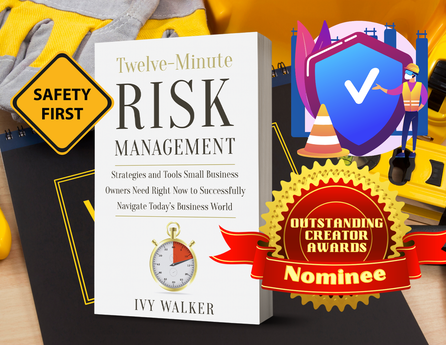
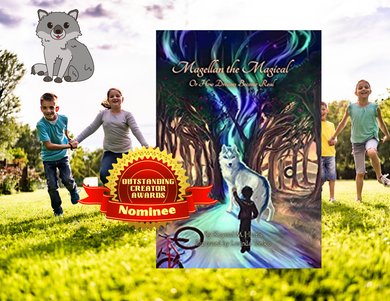
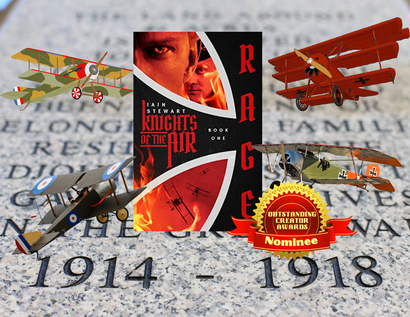
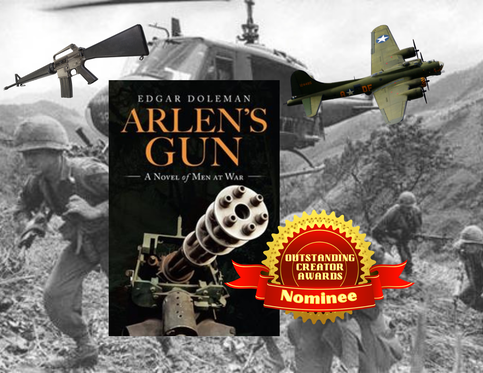

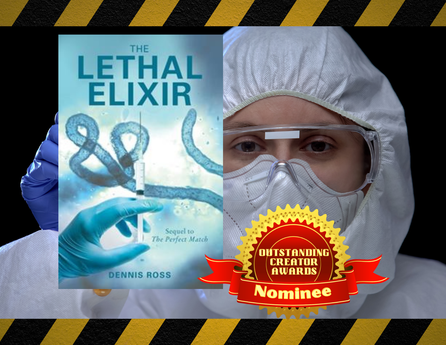

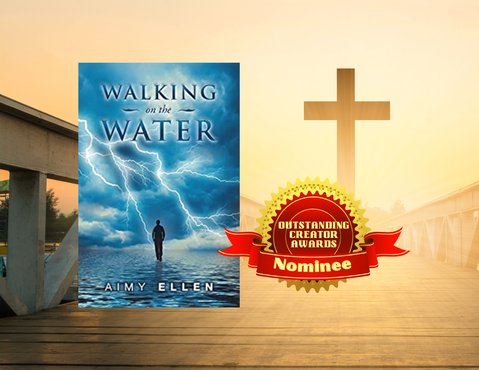

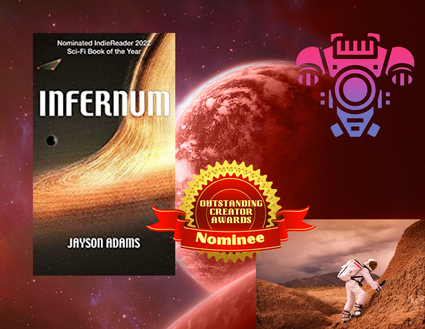
 RSS Feed
RSS Feed